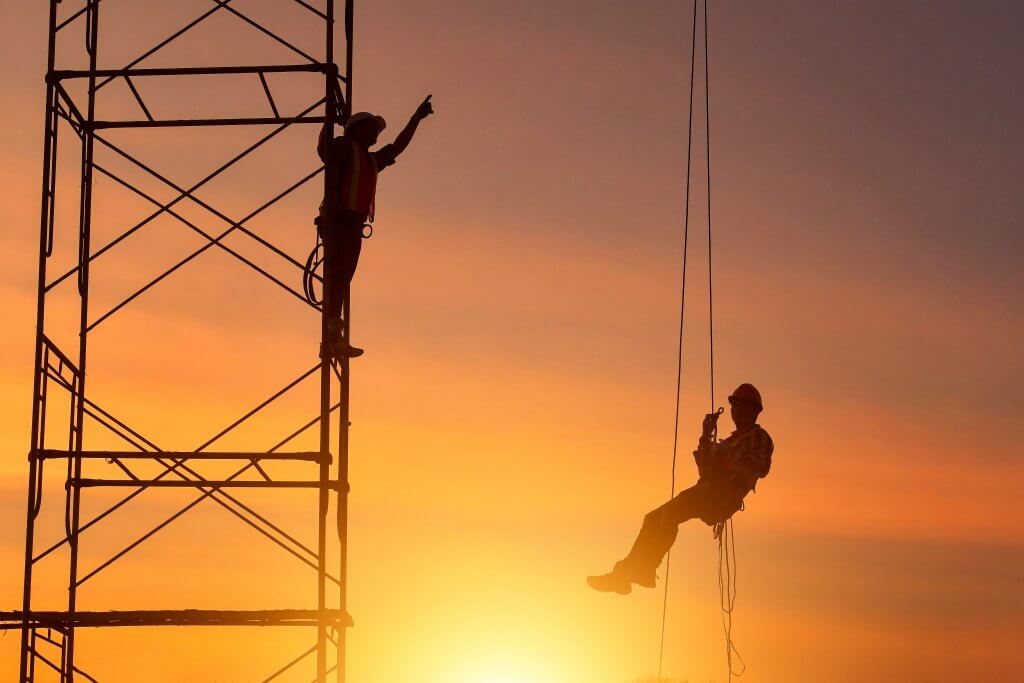May 6, 2024
Construction sites are dangerous working environments with potentially harmful pitfalls lurking at every corner and stage of a project. Ask any participant, and they’re likely to tell you that navigating and coming out unscathed requires strict adherence to detail and focus. The slightest misstep or lapse can have a ripple effect that reverberates into every facet of the current and future projects. Accidents are part of the construction mix, but they don’t have to cripple a project or a contractor. One of the ways to overcome these risky and ever-present occurrences is by creating a solid safety program.
Even in the best economic times when projects are plentiful, contractors are always looking for points of separation and competitive advantages that set them apart from the crowd, and a safety program is one of the savviest ways a contractor can achieve this goal.
Why Safety Matters
Safety is more than a program or set of protocols: it’s a strategy. When managed correctly, it offers contractors a distinct competitive advantage for several reasons including:
- Safety Programs Protect Employees: Working in construction is a rewarding career, but it can be challenging. With all the lifting, pulling, loud noises, and the myriad of potential pitfalls found on a construction site, working on one can test even the most detailed professionals. Workers who flourish in this field look forward to those challenges, but they also look forward to returning home once a job is complete. Having a strong safety program that ensures their welfare is the priority is the first step toward building a successful safety program.
- A Strong Safety Program Helps Build a Trustworthy Brand: Building a strong construction brand that competes for lucrative opportunities centers on the performance of a contractor. A large part of their performance has to do with application and adherence to safety protocols. Building a strong safety track record and showing a premium is placed on this arm of the business increases the likelihood of a contractor securing work on an ongoing basis.
- Investing in Safety Allows Contractors to Grow Financially: Safety saves lives, but it also saves dollars and cents. When a contractor brings a strong safety history to a job, the cost of insurance is lower. Those costs can be re-invested into other parts of the business including training, marketing, technology, and equipment.
- Safety Helps Contractors Build Powerful Networks: Prioritizing safety says a lot about a contractor and their brand, but it also speaks volumes to their potential network. No one, architect, engineer, or owner, wants to be associated with a contractor known for running a hazardous site. Building a reputation for responsible construction site management helps contractors amass the kind of network that seamlessly creates a valuable project pipeline.
- Safety Drives Employee Retention: Employees want to work, grow, and build sustainable careers. Employees also want to return home to their loved ones intact. Contractors who embrace this ideal tend to be champions of safety with the ability to build workplaces that lend themselves to higher employee retention rates, satisfaction, and morale.
Conclusion
Safety is an important component in the life of any contractor. Embracing this truth brings these business owners closer to reaching their full potential. More importantly, building a safety program allows a contractor to stand out in the eyes of potential clients who want to be associated with strong brands with a history of responsible operations. Safety is also a cornerstone for building staff, a fact that shouldn’t be overlooked, with the industry scrambling to fill positions to support the rapidly evolving growth trends that are being seen now and those that are to come in the future.
Save time and minimize risk with the most trusted contracts in the construction industry – powered by AIA Contract Documents’ next-generation platform, Catina. Request a Demo Here.
AIA Contract Documents has provided this article for general informational purposes only. The information provided is not legal opinion or legal advice and does not create an attorney-client relationship of any kind. This article is also not intended to provide guidance as to how project parties should interpret their specific contracts or resolve contract disputes, as those decisions will need to be made in consultation with legal counsel, insurance counsel, and other professionals, and based upon a multitude of factors.

